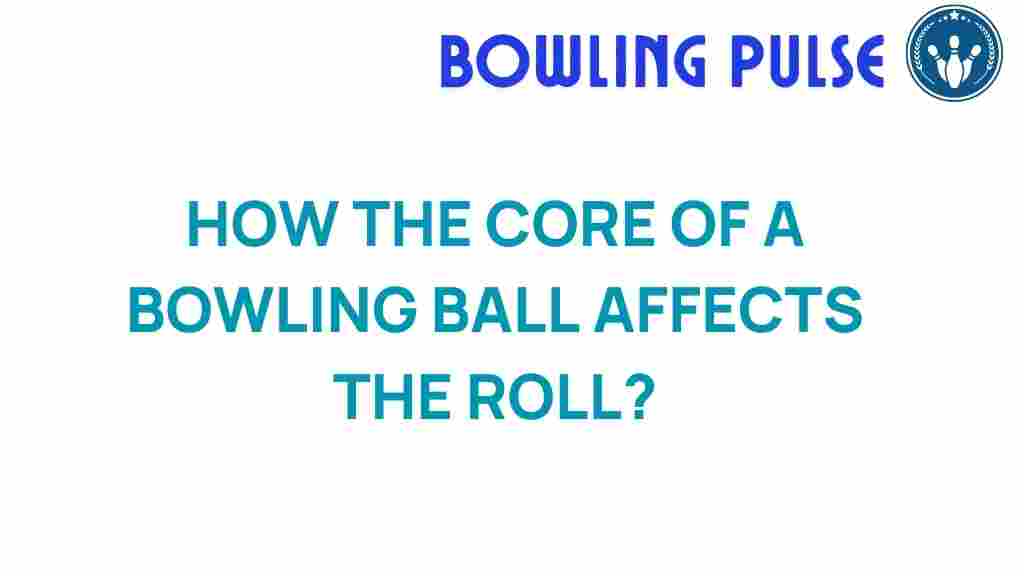Unraveling the Secrets: How the Core of a Bowling Ball Influences Your Game
When it comes to bowling, many factors play a crucial role in determining your overall performance. One of the most significant components that can make or break your game is the bowling ball core. Understanding how the core influences your ball dynamics and roll consistency can enhance your bowling techniques and ultimately improve your bowling performance. In this article, we will delve into the intricacies of bowling ball cores, explore their impact on the game, and provide insights into optimizing your game strategy.
What is a Bowling Ball Core?
The core of a bowling ball is its inner structure, designed to influence the ball’s motion as it rolls down the lane. Different core shapes and densities can significantly affect how the ball behaves, making it essential to choose the right core to suit your bowling style. The core is typically made from materials that provide a balance between weight and stability, allowing for various styles of play.
The Importance of Bowling Ball Core
Understanding the importance of the bowling ball core can help bowlers make informed decisions regarding their equipment. Here are some key factors to consider:
- Mass Distribution: The way mass is distributed within the core affects the ball’s rotation and trajectory.
- Shape: Different core shapes (symmetrical vs. asymmetrical) allow for different reactions on the lane.
- Density: The density of the core material influences the overall weight and feel of the ball.
How the Bowling Ball Core Influences Your Game
The core of a bowling ball directly impacts various aspects of your game, including ball dynamics, roll consistency, and overall performance. Let’s break down these influences step by step:
1. Ball Dynamics
Ball dynamics refer to how the ball behaves as it travels down the lane. The core plays a pivotal role in this aspect:
- Spin Rate: A well-designed core can enhance your spin rate, which is crucial for achieving the desired hook.
- Hook Potential: The core’s design influences how much the ball hooks, which can be tailored based on lane conditions.
- Stability: A stable core helps maintain a consistent trajectory, reducing erratic movements.
2. Roll Consistency
Achieving consistent roll is vital for every bowler. The core’s design contributes to this consistency:
- Symmetrical Cores: These provide a more predictable and consistent roll, ideal for beginners and those seeking a straightforward approach.
- Asymmetrical Cores: These allow for more complex hook patterns, suitable for advanced bowlers looking to manipulate their shots.
3. Bowling Performance
Your overall bowling performance is influenced by the core, along with your techniques and strategies:
- Control: A well-matched core can provide better control over your shots, allowing for more accurate placements.
- Power: The core’s design can enhance the energy transfer upon impact, increasing pin action.
- Adaptability: Choosing the right core helps you adapt to different lane conditions, enhancing your competitive edge.
Choosing the Right Bowling Ball Core
Selecting the right bowling ball core is essential for optimizing your game strategy. Here’s a step-by-step process to guide you:
Step 1: Assess Your Bowling Style
Before choosing a bowling ball, evaluate your bowling style:
- Are you a straight bowler or do you prefer hooking the ball?
- What is your average speed and rev rate?
Step 2: Understand Core Types
Familiarize yourself with the different types of cores available:
- Symmetrical Cores: Best for beginners and those looking for predictable rolls.
- Asymmetrical Cores: Ideal for advanced bowlers who want to customize their hooks.
Step 3: Consider Lane Conditions
Your choice of core should also reflect the typical lane conditions you encounter:
- Dry Lanes: A ball with a strong core might help increase hook potential.
- Oily Lanes: A ball with a smooth core can help maintain control.
Step 4: Test and Adapt
Once you’ve selected a bowling ball, it’s essential to test it out:
- Take the ball for a few practice sessions.
- Observe how it reacts to different lane conditions.
- Be open to adapting your strategy based on your observations.
Troubleshooting Common Issues
Even with the right bowling ball core, you may encounter issues that affect your game. Here are some common troubleshooting tips:
1. Inconsistent Roll
If you’re experiencing inconsistent rolls:
- Check your grip and release technique.
- Ensure you’re using the right ball for the lane conditions.
- Consider re-evaluating your core choice.
2. Lack of Hook
If your ball is not hooking as expected:
- Review your release angle and speed.
- Try a ball with a stronger asymmetrical core.
- Adjust your approach to the lane.
3. Poor Pin Action
If you’re not getting the pin action you desire:
- Focus on improving your strike accuracy.
- Consider the weight of the ball and how it matches your style.
- Experiment with different core configurations.
Conclusion
Understanding the bowling ball core is integral to enhancing your bowling performance. By grasping how the core influences ball dynamics, roll consistency, and your overall game strategy, you can make informed choices about your sports equipment. Whether you’re a beginner or an experienced bowler, selecting the right core can provide a significant advantage. Remember, consistent practice combined with the right techniques and equipment will lead to improved scores and a more enjoyable bowling experience.
For more tips on bowling techniques and equipment, check out our comprehensive guide on mastering your bowling game. If you’re looking for the latest bowling gear, visit our recommended sports equipment store to find the best products tailored to your needs.
This article is in the category Techniques and created by BowlingPulse Team
